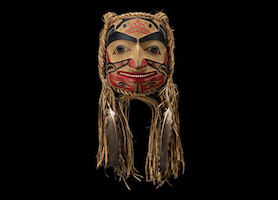
NEW YORK — The arts and objects made by native and indigenous peoples in North America have long been of interest, not just in region where they were made but by collectors and admirers everywhere. This is no less true for the works of the Native American communities of the Northwest Coast of the continent.
Northwest Coast works are collected for their fine workmanship and designs. Items such as blankets and baskets that were originally utilitarian have been elevated to fine art, and artifacts such as rattles, masks and carvings, especially those made in the 20th century or earlier, are highly prized.
Michael Mroczek, co-auctioneer of MBA Seattle Auction in Renton, Washington, said there has long been demand for Northwest Coast art and antiques in its region of origin, but today, objects are shipped all over. “I have been in the auction industry since I was seven … When I grew up, my dad was collecting some of the Tlingit baskets, Haida hats etc. … but the price point was always high, in the thousands of dollars,” he said. “What I think is really hitting now is the contemporary, in all markets, and that is being led by major artists like Robert Davidson, Preston Singletary and the Hank family. We are seeing much higher calling for that than we ever used to.”
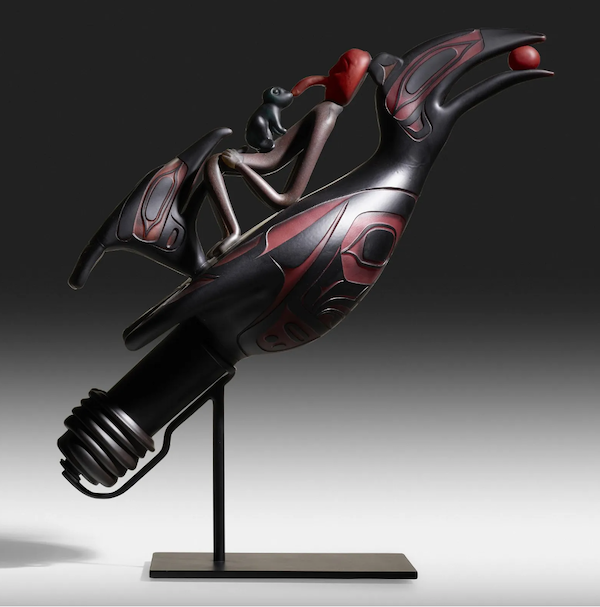
Preston Singletary, who began working in glass in 1982, is widely considered as a bridge artist, linking European glass-blowing traditions and native art styles. Typical of his oeuvre is his blown, hot-sculpted and sand-carved work in glass from 2005, Transference (Tulatseen), which sold for $16,000 plus the buyer’s premium in September 2020 at Rago Arts and Auction Center.
Mroczek said that while contemporary native arts have largely supplanted demand for antique objects, fine 19th-century pieces still perform well as they become more scarce, with most having found homes in major collections and museums. “When really good pieces hit the market, they explode and they smash estimates,” he said.

Baskets are coveted and have a flowing collector base, depending on the condition and the quality, he said. The tradition of making native arts is passed down from generation to generation and basket-weaving is no exception. Northwest Alaska has been the home to the Inupiat people, and members of the Hank family are among its most expert basket-makers. A large owl-cover baleen (whalebone) basket, attributed to Eunice Hank (Inupiaq), realized $5,500 plus the buyer’s premium in December 2020 at at MBA Seattle Auction. Born in 1957 in Washington, Eunice Hank learned to weave in Point Hope, Alaska, and she and her husband often make baskets together. She learned the craft from her parents and taught it to her children.
Collectors tend to have specific genres they collect, whether baskets, pottery or carvings, but a general criterion for serious collectors is to only collect works by artists who are members of First Nations and indigenous groups, Mroczek said. “Those artists that I mentioned have very long careers doing native arts and arts in their native style,” he said, noting that these masters have elevated their chosen art forms and taken them into new directions with modern mediums and techniques. “Preston Singletary carves glass and does traditional forms with uniform designs and sandblasted glass, which are just incredible,” he said.
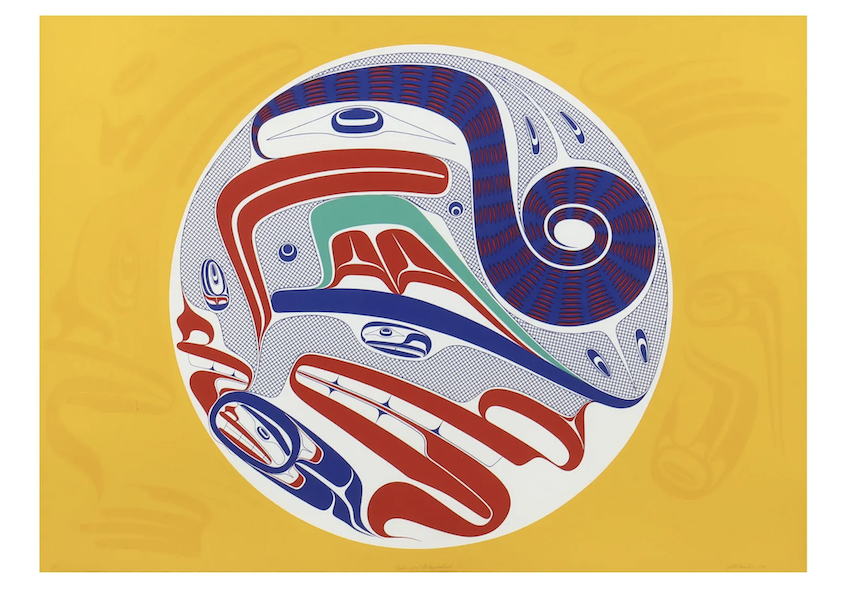
Robert Davidson (Haida) is another indigenous Alaska artist that collectors seek out, he said. Davidson’s work is widely collected and the artist had a major retrospective exhibition at the Vancouver Art Gallery and the Canadian Museum of Civilization in the mid-1990s. Well-known for his totem poles and masks, one of his 1990 examples, a S’gan mask (Killer Whale mask), earned $54,458 plus the buyer’s premium in July 2021 at First Arts Premiers Inc. It exemplifies a period when the artist was actively embracing diverse techniques from mask-making to sculpting in relief as well as working in metal jewelry.
Born in 1946 in Hydaburg, Alaska, Davidson was the great-grandson of a renowned Haida artist, Charles Edenshaw, and he learned how to work with wood and carve argillite. In 1969, Davidson carved and raised a large totem pole for his hometown of Old Massett. “A superb craftsman, he has mastered every Northwest Coast art medium, and has in recent years begun exploring the more abstract elements of Haida formlines,” according to First Arts Premiers Inc.
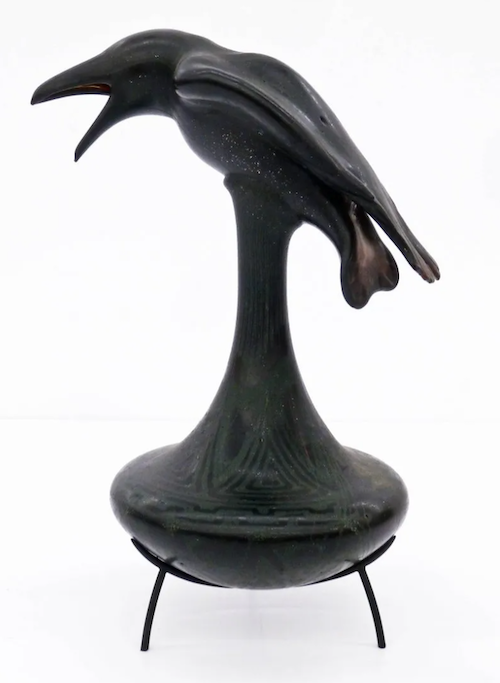
While many collectors seek out only native artists, others working in this style also draw collectors, such as William Morris. Despite not being part of an indigenous peoples, Morris works in traditional Native American art style. One of his carvings, a 1999 work titled Crow on Bottle, brought $35,000 plus the buyer’s premium in October 2016 at MBA Seattle Auction.
The graphically striking ceremonial dancing blankets known as Tlingit Chilkat blankets are prized by collectors for their tight weave and texture, the patterns of their motifs and their pleasing color palettes. A 63-by-52in example from the third quarter of the 19th century made $40,000 plus the buyer’s premium in November 2018 at Hindman. Woven with mountain goat’s wool, the blanket had desirable totemic imagery and a palette of yellows, greens and browns.
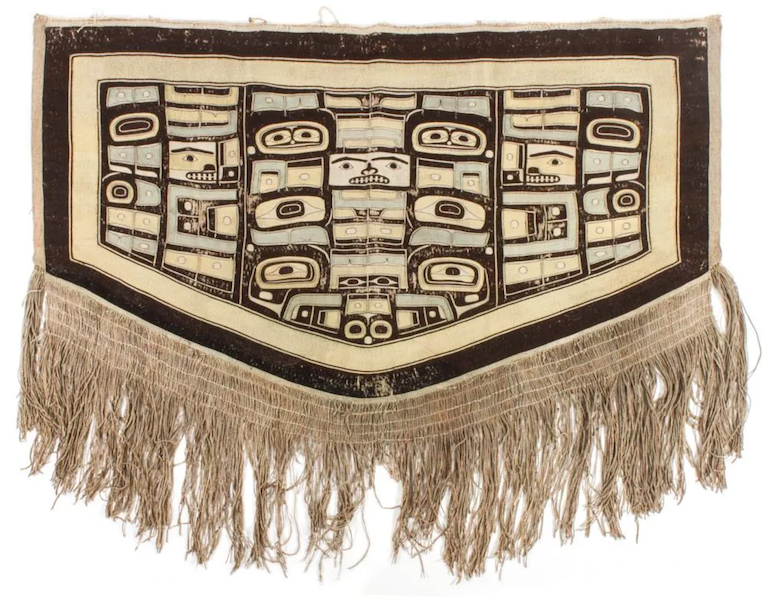
Mroczek said the Northwest Coast collecting realm hits all price points and many people start out buying decorative things. “If you really wanted to get into high-end collecting, you should go for the actual things that were used by these cultures, but that is basically going pre-1930,” he said, adding that even some of the early touristy items from the early 20th century are starting to gain value because so much time has gone by. Among contemporary artists, he suggests looking for those who are part of indigenous groups. “Buy the best you can, buy the biggest names you can — those are the best and the ones that are continually going up in market value.”


